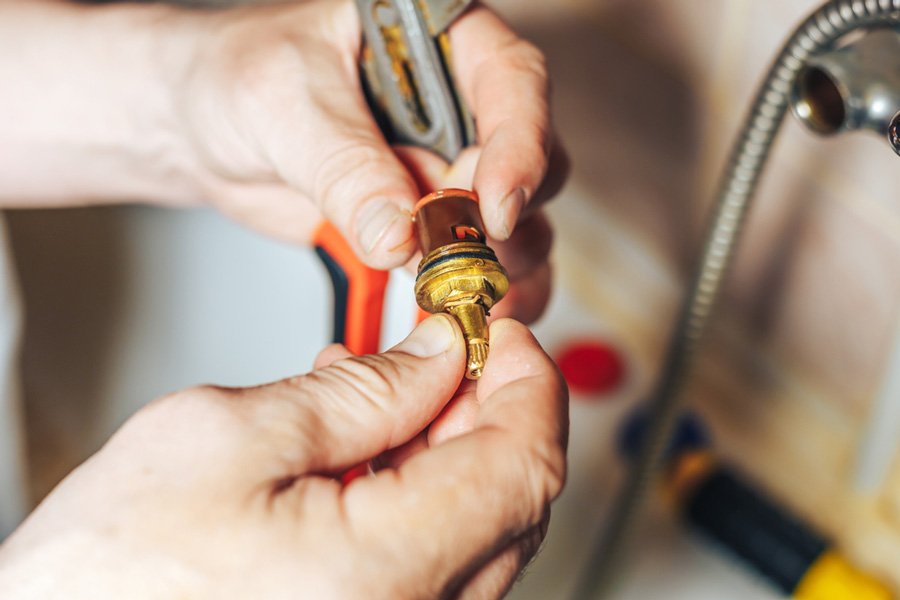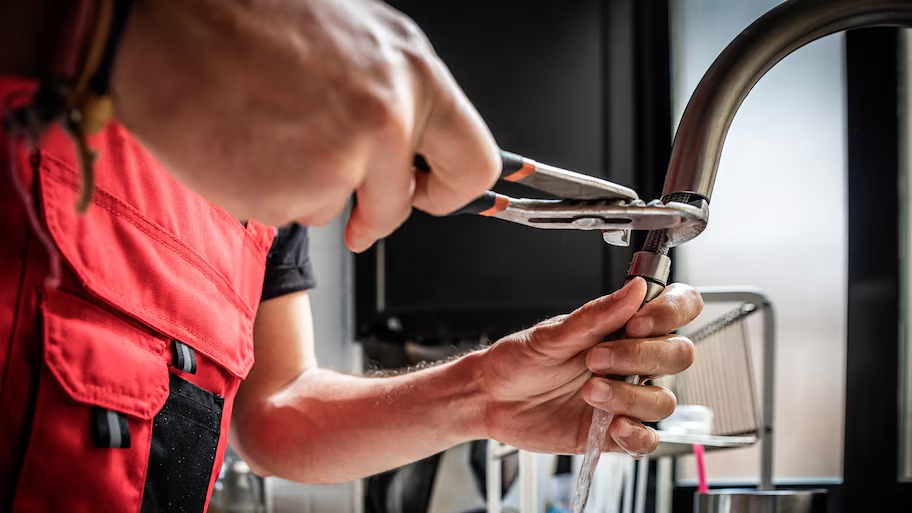What are your ideas on Leaky Faucets: Why They Happen & What to Do About Them?

Trickling faucets might seem like a small trouble, but their influence exceeds just the aggravation of the noise. From wasting water to sustaining unnecessary financial prices and health threats, disregarding a trickling faucet can bring about numerous consequences. In this write-up, we'll delve into why it's vital to address this typical home problem without delay and efficiently.
Wastage of Water
Environmental Effect
Trickling taps add considerably to water waste. According to the Environmental Protection Agency (EPA), a solitary faucet trickling at one drip per secondly can throw away greater than 3,000 gallons of water each year. This not just pressures water sources however likewise influences communities and wild animals depending on them.
Step-by-Step Guide to Fixing a Dripping Tap
Devices Called for
Before attempting to fix a trickling tap, gather the essential tools, including a flexible wrench, screwdrivers, substitute parts (such as washing machines or cartridges), and plumber's tape.
Usual Tap Issues and Their Solutions
Identify the kind of faucet and the specific concern creating the drip. Usual issues include damaged washing machines, corroded shutoff seats, or defective O-rings. Refer to manufacturer directions or on-line tutorials for detailed assistance on fixings.
Financial Costs
Boosted Water Costs
Beyond the ecological influence, trickling taps can blow up water costs considerably. The gathered wastefulness gradually equates into greater energy expenses, which could have been stayed clear of with prompt repair services.
Prospective Residential Or Commercial Property Damage
Moreover, long term leaking can lead to damage to components and surfaces surrounding the tap. Water build-up can cause staining, rust, and even architectural concerns if left neglected, causing additional fixing expenses.
Health Problems
Mold and Mildew Development
The continuous existence of wetness from a leaking tap develops an optimal setting for mold and mildew and mildew development. These fungi not just jeopardize interior air top quality however additionally present wellness risks, specifically for people with breathing conditions or allergies.
Waterborne Illness
Stagnant water in trickling faucets can come to be a breeding place for germs and various other virus, increasing the threat of waterborne illness. Pollutants such as Legionella germs thrive in stationary water, possibly causing severe illnesses when ingested or inhaled.
DIY vs. Professional Repair work
Advantages and disadvantages of Do It Yourself Repair Service
While some may try to repair a dripping tap themselves, DIY fixings feature their own set of challenges. Without proper expertise and devices, DIY efforts can worsen the issue or lead to incomplete repairs, lengthening the trouble.
Benefits of Hiring a Professional Plumber
Hiring a professional plumber ensures that the underlying source of the leaking tap is addressed effectively. Plumbings possess the know-how and equipment to identify and fix tap concerns efficiently, saving time and reducing the risk of more damage.
Ecological Duty
Specific Contribution to Conservation
Taking responsibility for dealing with dripping faucets lines up with wider initiatives towards water preservation and environmental sustainability. Every individual's activities jointly make a significant effect on maintaining priceless sources.
Lasting Living Practices
By focusing on punctual repair work and adopting water-saving practices, individuals contribute to lasting living techniques that benefit both existing and future generations.
Safety nets
Normal Upkeep Tips
To stop leaking faucets, perform routine upkeep such as cleaning up aerators, evaluating for leaks, and replacing worn-out components without delay. In addition, take into consideration mounting water-saving devices or upgrading to a lot more efficient components.
Relevance of Prompt Services
Addressing dripping faucets as soon as they're noticed protects against further water wastefulness and potential damages, eventually saving both water and money over time.
Impact on Home Value
Assumption of Well-Maintained Residential Or Commercial Property
Keeping a residential property in good condition, consisting of resolving upkeep issues like leaking faucets, enhances its regarded worth and charm amongst potential purchasers or lessees.
Impact on Resale Worth
Qualities with well-kept plumbing fixtures, consisting of taps, command higher resale worths in the realty market. Dealing with leaking taps can contribute to a favorable perception during building examinations and settlements.
Final thought
Dealing with a dripping tap surpasses plain ease; it's a vital action toward conserving water, lowering financial costs, and guarding health and home. Whether with do it yourself repair services or professional aid, acting to fix trickling faucets is a little yet impactful method to promote responsible stewardship of sources and contribute to a healthier, a lot more sustainable future.
How to Fix a Leaky Faucet: Step-by-Step Repair Guide
A leaky faucet may seem like a simple annoyance, but if it's not fixed promptly, that leak could cost hundreds to potentially thousands. From water damage to mold, mildew, and high water bills, even a tiny leak can be catastrophic if left unattended. Damage like this can even affect the overall value of your home, so it's important to take the right approach for leaky faucet repair. You may need the help of a plumber in some cases, but we've got a few tips you can try on how to fix a leaky faucet before calling the pros.
Four Faucet Types
When you're learning how to fix a leaky faucet, the first step is knowing what kind of faucet you're working with! There are four common types.
Cartridge Faucets
Cartridge faucets come in one- or two-handled varieties. In one-handled cartridge faucets, hot and cold water combines in a single cartridge. In the two-handled versions, hot and cold water are controlled separately and mixed in the faucet.
Ball Faucets
Ball faucets have a single lever you push up and down to adjust the pressure and rotate to change the temperature. A slotted metal ball controls the amount of water allowed into the spout.
Compression Washer Faucets
They're the oldest type of faucet, but they're still used in many homes — especially older ones. Compression faucets have two separate handles that, when turned, raise or lower the washer that seals a water valve. This valve stops water from flowing through the faucet when it is turned off.
Disc Faucets
Disc faucets rarely need to be repaired due to their maintenance-free design. The water flow is controlled by two discs — the upper one raises and lowers against a fixed lower disc, creating a watertight seal. If your disc faucet starts leaking, you may need to replace the seals or clean residue buildup from the inlets.
Fixing a Leaky Faucet
Step 1: Turn Off the Water
Whether you're learning how to fix a leaky bathtub faucet or how to fix a leaky kitchen faucet, always turn off the water supply to your working area when you're fixing a leak. The last thing you want is a flood added to your list of things to fix.
Look for the shutoff valves below your sink or around the tub and turn them clockwise to stop the water flow. If your faucet doesn't have shutoff valves, you may need to turn off the water for the whole house. Check to make sure it's off by turning the faucet on. If nothing comes out, you're ready to start the repair.
Step 2: Take Apart the Faucet
How you disassemble your faucet depends on the type of fixture you have. You can use a flathead screwdriver to remove the caps on top of the handle or handles for cartridge and compression faucets. Inside, you should see handle screws. Unscrew these with a screwdriver to remove the handle.
Disc- and ball-style faucets will typically have an inlet screw near the handle, and removing that will reveal the interior of the faucet.
Detach the Valve Stem
For cartridge- and compression-style faucets, you'll see the inner valve stem or cartridge once you remove the faucet handles. If you have a compression faucet, unscrew the brass valve stem. If you have a cartridge faucet, pull out the cartridge. If your cartridge has been in place for a while, it may require some tools or extra force to remove it due to mineral deposits.
Examine and Replace Parts
Once you've removed the parts, check them out to confirm what needs to be replaced. You may see corroded rubber washers, O-rings, stems, or cartridges. On a ball-style faucet, check the seats and springs for damage.
If you need to repair a leaky disc faucet, check the inlet and seals on the lower disc.
Once you determine what parts must be replaced, visit your local hardware store. Bring the damaged parts with you to ensure you can purchase the correct components to replace them.
Clean Valves and Faucet Cavity
If you've removed a stem or cartridge, you may notice mineral buildup in the faucet's threads. Use white vinegar to clean the valve seat by soaking it for a few minutes, then scrub it away with a soft toothbrush and rinse with warm water. You can also clean the interior of the faucet in the same way.
Reassemble the Faucet
Once your faucet is cleaned and the required parts have been replaced, it's time to reassemble it. Put the pieces back together and slowly turn the water supply back on. Doing this slowly is crucial because too much initial water pressure can damage the new hardware you've just installed.
https://homewarranty.firstam.com/blog/how-to-fix-leaky-faucet

I am very occupied with Why It's Important to Fix Leaky Faucets and I am assuming you enjoyed the new post. Appreciated our review? Please quickly share it. Help another person check it out. I take joy in your readership.